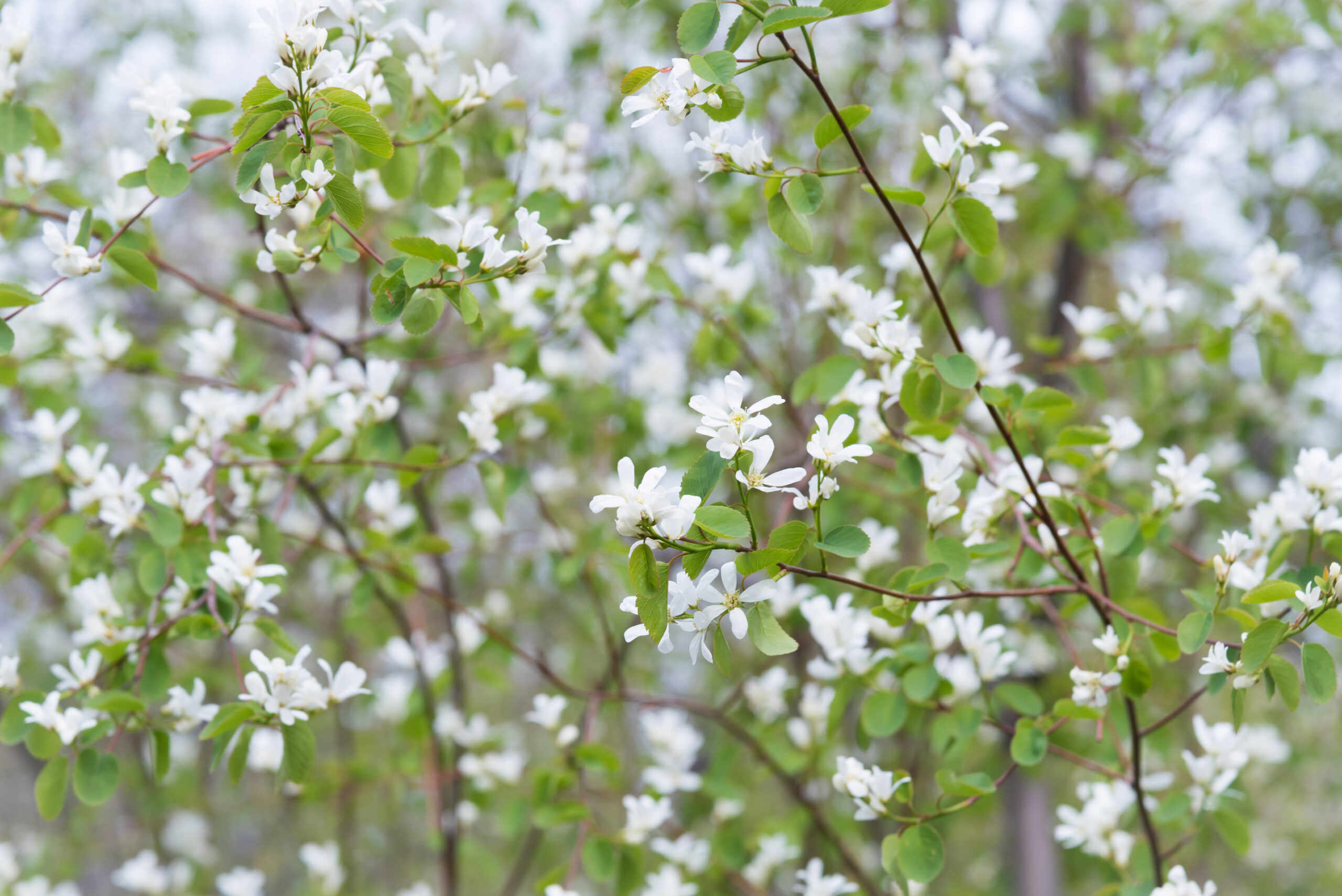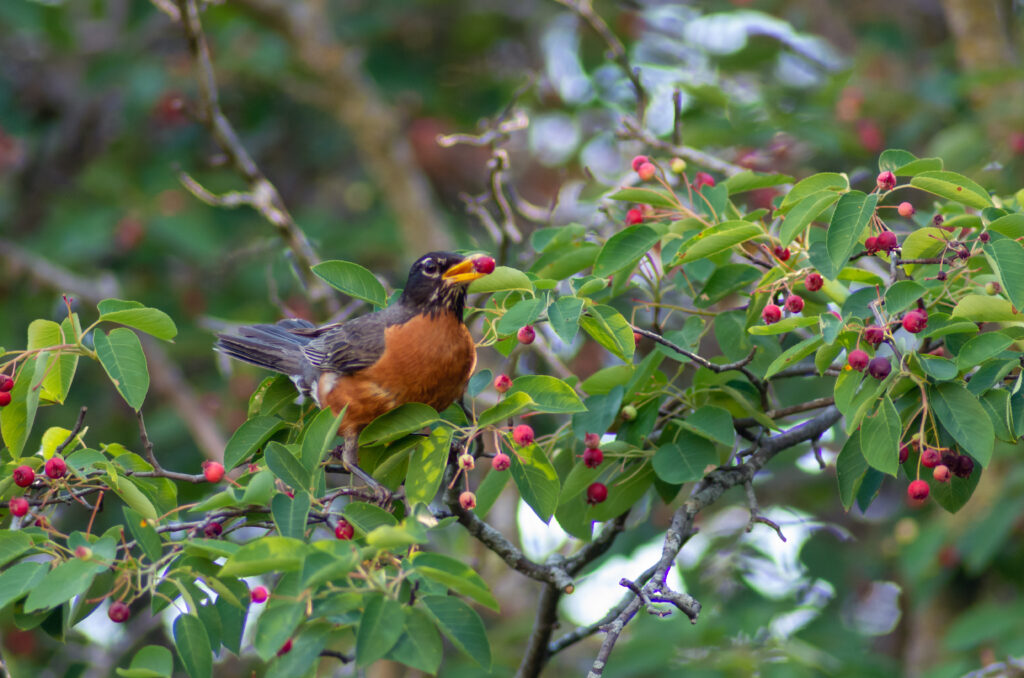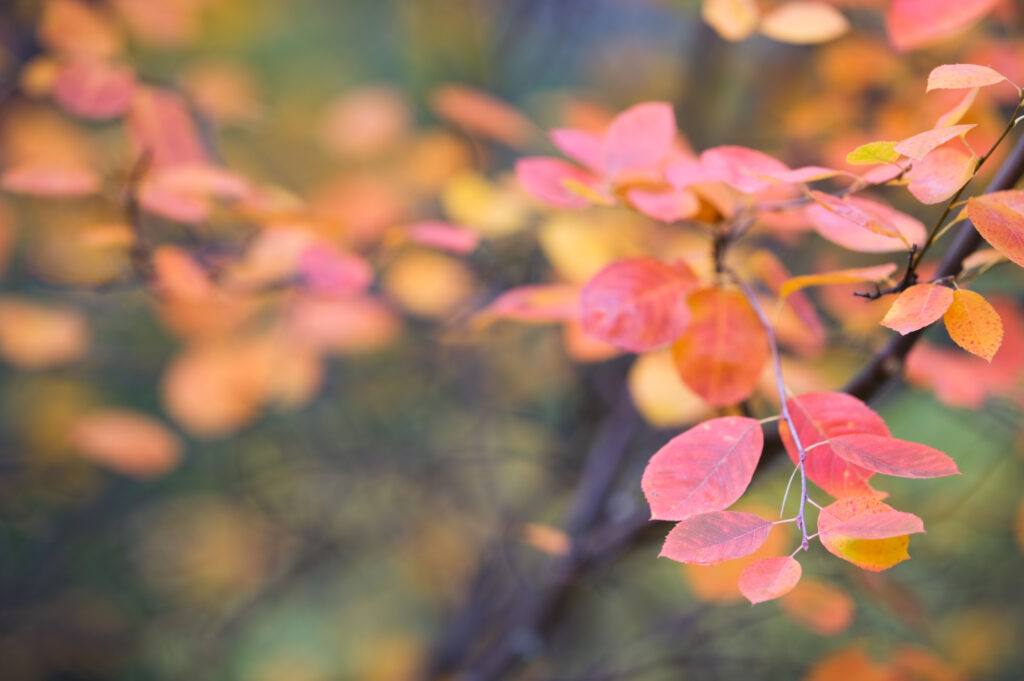Serviceberry: Native Beauty That Supports Wildlife

When most summer leaves are fading and the first frost is around the corner, serviceberry steps in to light up your landscape. With vibrant fall foliage, delicate spring flowers, and edible summer berries, this Idaho native is much more than a shrub – it’s a multi-season superstar, a pollinator magnet, and a wildlife ally all in one.
Whether you’re looking to add seasonal color, support birds and pollinators, or plant a resilient native that thrives in Boise’s climate, serviceberry has something to offer. Let’s take a closer look at why this plant deserves a spot in your yard.
Quick Snapshot
- Bloom time: Spring (white blossoms), Summer (edible berries), Fall (gold, orange, red foliage)
- Light: Full sun to part shade
- Soil: Tolerates a range of soils, prefers well-drained conditions
- Water: Drought-tolerant once established
- Wildlife value: Excellent for pollinators, birds, and small mammals
- Caution: Some species can self-seed; prune lightly if you want a tidier appearance
Why Serviceberry Matters

Serviceberry (Amelanchier alnifolia) is a keystone plant for backyard ecosystems. Its flowers provide early-season nectar for bees and butterflies. By summer, the berries feed birds and small mammals. In fall, the leaves turn brilliant shades that brighten your garden just as most plants start to fade. Even in winter, the smooth gray bark and elegant branching provide visual interest and wildlife habitat.
Benefits for your yard:
- One plant = many seasons of interest. Flowers, berries, and foliage provide beauty and food from spring through fall.
- Support pollinators and birds. Early blooms feed bees, and summer berries supply protein for nesting birds.
- Build resilience. Native plants like serviceberry thrive in local soils and climate, reducing maintenance and water needs.

Planting Serviceberry
- When to plant: Early spring or fall
- Spacing: 6–10 feet apart for shrubs, 12–15 feet for small tree forms
- Soil & Sun: Full sun to part shade; well-drained soil preferred
- Watering: Regular until established, then mostly self-sufficient
- Maintenance: Prune lightly in late winter to maintain shape or remove damaged branches; mulch young plants for winter protection
Design Ideas – Where Serviceberry Shines
- Pollinator & bird border: Plant near vegetable beds or flower borders to attract wildlife and support beneficial insects.
- Edible garden: Berries are delicious fresh, dried, or made into jams.
- Fall color anchor: Pair with asters, native grasses, and ornamental shrubs to create a stunning autumn display.
- Naturalized hedge or small tree: Great for screening or defining garden edges while offering food and shelter for wildlife.
Serviceberry isn’t just another shrub; it’s a multi-season investment in beauty, wildlife, and ecological resilience. Plant one this fall, and you’ll enjoy flowers, fruit, and foliage that support pollinators, feed birds, and brighten your yard for years to come.
CATEGORY
10/02/2025
a word from our viewers